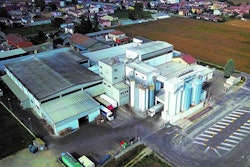
New major government regulations set for 2020 implementation are about to shape Japan’s pet industry anew. In his annual New Year’s message to members of the Japan Pet Food Industry, Chairman Hisashi Ishiyama said new government ordinances will start to be promulgated this year through 2022 in line with the fourth set of revisions made last June to Japan’s animal welfare management law.
First of the ordinances will limit pet sales to registered business locations, mainly to address issues related to pet sales via the internet. Ishiyama said when the law was revised for the third time in 2012, the number of pets sold via the internet was only a few hundred per year. But in 2019, “it reached tens of thousands and some restraint is needed from the viewpoint of accountability,” he said.
Under the revised law, Japan by 2021 will only allow the sale or transfer of puppies and kittens starting 56 days after birth. In addition, the government is expected to impose stricter standards on breeding facilities and management for breeders and pet shops to further improve pet welfare. In 2022, newly bred dogs and cats will be required to wear microchips to promote better awareness and responsibility on the part of pet owners.
Significant developments for future of pet industry
Ishiyama said 2019 was an important year, with developments that will have significant impact on the Japanese pet industry’s future. Last year’s survey of its pet food industry saw the country’s total shipment volume reaching 99.6% compared to 2018, Ishiyama said.
Japan’s pet food FY2018 survey (April 1, 2018, to March 31, 2019) also revealed the following:
- Shipment amount was 105.1% of the 2018 amount, or ¥ 302.4 billion (US$2.76 billion).
- With the number of breeding dogs on a downward trend, premium dog foods increased shipments to ¥ 137.5 billion (US$1.26 billion), or 104%.
- An increase in the number of cats breeding increased cat food shipments to 297,000 tons (103.8%)
- Pet food premiums have resulted in further increases in shipment value, to ¥ 154.5 billion yen (US$1.4 billion), or 106.3%.
















